
email us
ted@chattanoogaroofingco.com

call us now
(423) 308-ROOF
Blog
- Home > Blog
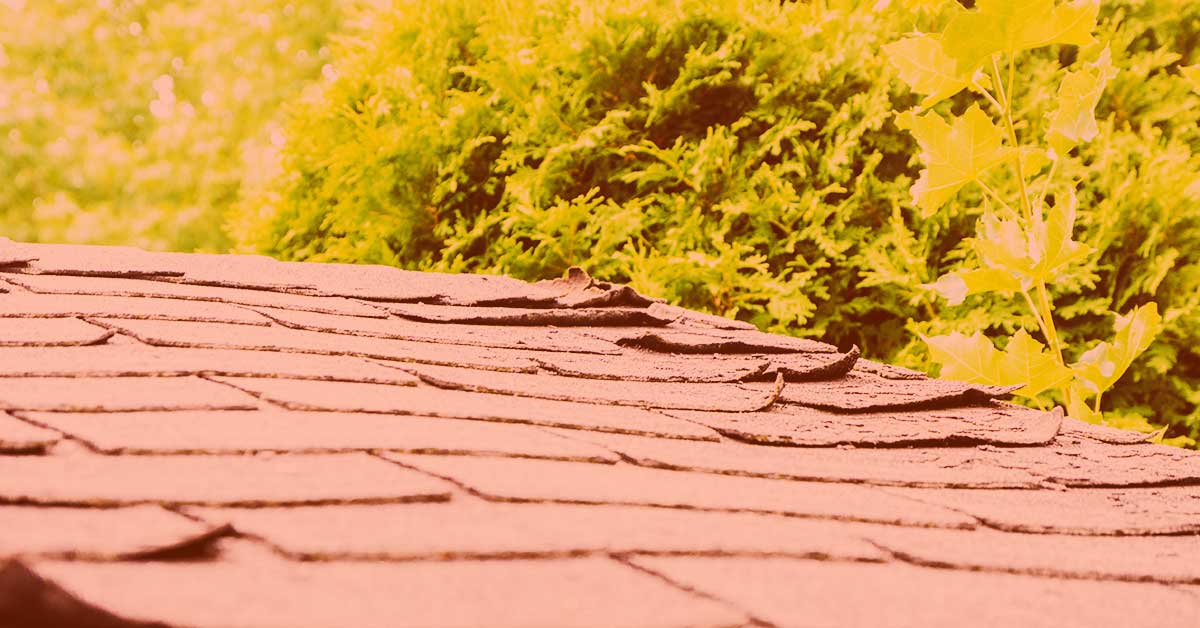
31 Oct. 2023
Roof Companies Near Me
6 Top Tips for Finding the Best Roof Companies Near Me
When it comes to your home, roofing is an important investment. Whether you need a new roof installed due to storm damage or are replacing an outdated one with a more modern look, finding the right roofing company for the job is essential. With so many options on the market today, it can be difficult to know where to start and what factors should be taken into consideration when making this important decision. To help you in your search, we’ve put together 6 of our top tips on how to find the best roof companies near me. Read on as we share some of our insights into picking out an experienced and reliable contractor who will deliver quality work at a fair price.
Research the roofing companies in your area and check their reviews
When looking for a local roofing company, it is crucial to conduct thorough research. Prior to selecting a contractor, take the opportunity to review their ratings and feedback from other homeowners. By considering the experiences of others, you can gain valuable insights into the company’s workmanship, customer service, and professionalism. Keep in mind that your roof is one of the most important elements of your home, ensuring your family’s safety and protection from the elements. Therefore, settling for anything less than the best is not ideal. Dedicate time to conducting due diligence, and you might be pleasantly surprised by the positive impact a skilled roofing professional can have. Don’t underestimate the importance of finding the right roofing company for your needs. Invest in quality and reap the benefits of a well-maintained, durable roof that offers peace of mind for years to come.
Ask friends, family, and neighbors for recommendations
Finding the best roofing company can seem overwhelming at first, but there’s a simple yet effective strategy you can use to narrow down your options. Start by reaching out to your circle of friends, family, and neighbors – these trusted individuals may have valuable insights into local roofing companies. By asking for recommendations, you can gain valuable firsthand accounts of their experiences, including the quality of work, professionalism, and pricing. This information will empower you to make a more informed decision and steer clear of subpar roofing companies. Don’t hesitate to engage in conversation and gather as much information as you can. Taking this proactive approach can lead you to the most reliable roofing company in your area, providing you with peace of mind and exceptional service.
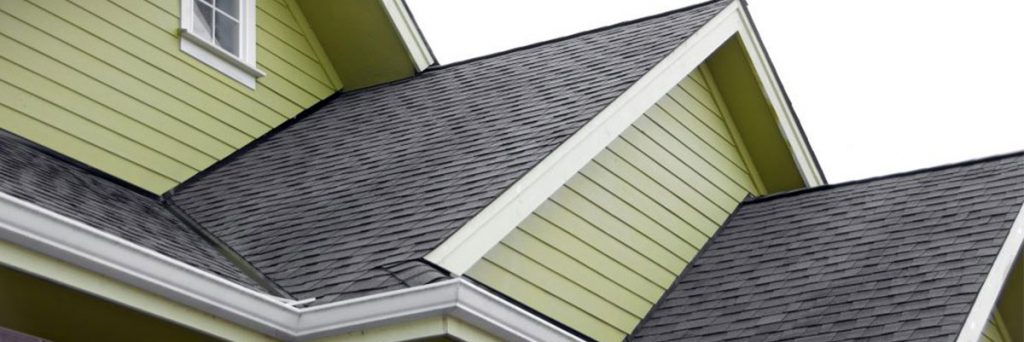
Roofing Companies Near Me
Check out customer service ratings online to ensure you’re getting quality
Finding a reputable roofing company in your area can be a daunting task, given the multitude of options available. However, taking the time to research and vet each potential candidate is crucial to ensure that you choose the right company for your needs.
One effective tip to aid in your search is to check out their customer service ratings online. This step can provide valuable insights into the company’s reputation and the experiences of previous customers, helping you make an informed decision.
Undoubtedly, the power of customer service ratings should not be underestimated. These ratings play a significant role in identifying the best roofing company for your home or business. Positive ratings can provide peace of mind, assuring you of quality service and customer satisfaction.
Remember, a well-established roofing company with excellent customer service is essential for maintaining the structural integrity and longevity of your property. Therefore, don’t rush your decision-making process; invest time and effort into finding the perfect roofing company that meets your requirements.
Make sure the company is licensed and insured as well as experienced with the type of roofing you need
When it comes to your home, a reliable and skilled roofing company plays a vital role in ensuring the integrity of your roof. Here are some key points to consider when searching for a roofing company near you:
- Licensing and Insurance: It’s crucial to choose a company that is licensed and insured for roofing work. This guarantees that they have the necessary training and qualifications to handle the job correctly and safely.
- Specialization: Look for a company that has experience with the specific type of roofing you need. For instance, if you’re considering a metal roof, seek out professionals who specialize in metal roofing installations. Their expertise will ensure that you receive the highest quality of workmanship.
- Reputable and Trustworthy: Do some research on the company’s reputation. Check out customer reviews and testimonials to gain insight into their track record. A reliable and trustworthy roofing company will have a positive reputation in the industry.
By taking these factors into account, you can embark on your quest to find the best roofing company in your area with confidence. Remember, investing in the right roofing company will ultimately protect your home and provide you with peace of mind. So, don’t rush the process – take the time to choose wisely.
Verify that the company offers a warranty for their work
Your roof is one of the most important components of your home, so finding a reputable and professional roofing company is crucial. One important factor to consider when searching for the best roofing company near you is whether or not they offer a warranty for their work. A good warranty not only gives you peace of mind but also shows that the company stands behind their work. Before you hire any roofing company, make sure to ask about their warranty policy and what it covers. This can help protect you from unexpected repair costs down the line. So when you’re on the hunt for the perfect roofing company, remember to look for one that offers a reliable warranty.
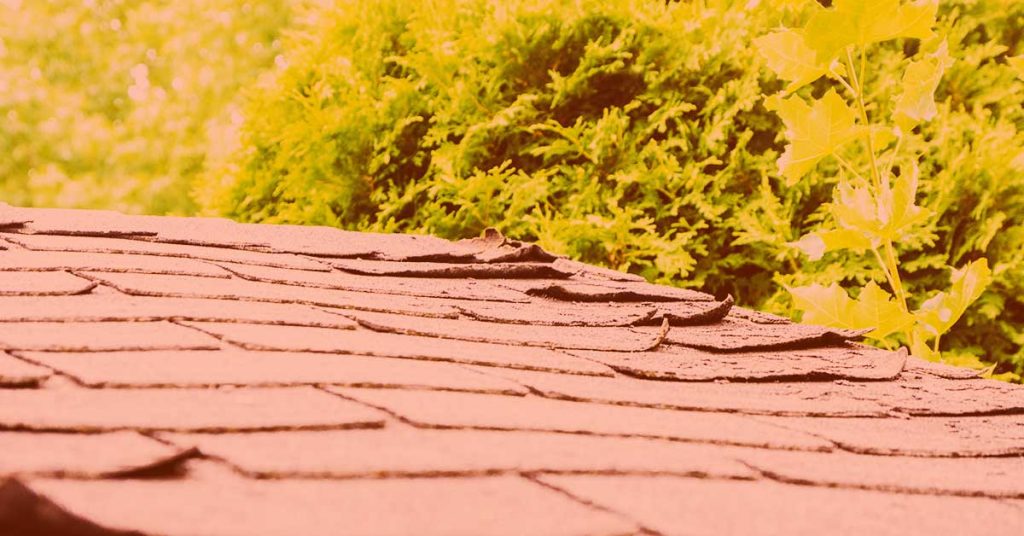
Best Roofing Company
Have an in-person consultation with the roofing company so you can get all your questions answered
If you’re in need of roofing services, an in-person consultation with a roofing company should be your top priority. This meeting can provide you with a vast amount of information that cannot be found on their website or through email. It allows you to ask questions that are specific to your circumstances and get answers tailored to your needs. This professional approach will give you peace of mind, knowing that you have all the information needed to make an informed decision about your roofing needs. An in-person consultation is a critical step in ensuring that your home or business is in good hands.
Ultimately, your roofing decision requires thorough research and due diligence on your part. We hope these tips have been beneficial in helping you make the right choice for you and your home. It is important to remember that a roof is a huge investment that requires much consideration. Get recommendations from people around you, check reviews online, pay attention to customer service ratings, ensure the company is licensed and experienced with the type of job you need to be completed, verify there’s a warranty for their work, and finally reach out for an in-person consultation with the company of your choice. Remember that when making such a large investment it’s always better to be safe than sorry – so do your homework! Contact several reputable companies and get multiple quotes before making up your mind. That way you are sure to get quality roofing services for the best price available in your area.
Chattanooga Roofing Company
https://www.google.com/maps?cid=3134983317498625437
https://www.google.com/maps?cid=3134983317498625437
(423) 308-7663
- By: chattroof
- roof companies, reputable roofing companies, reliable roofing companies, affordable roofing companies, professional roof companies near me, professional roof companies, best roofing company near me, best roofing company, roofing company in my area, roof companies near me, local roof company
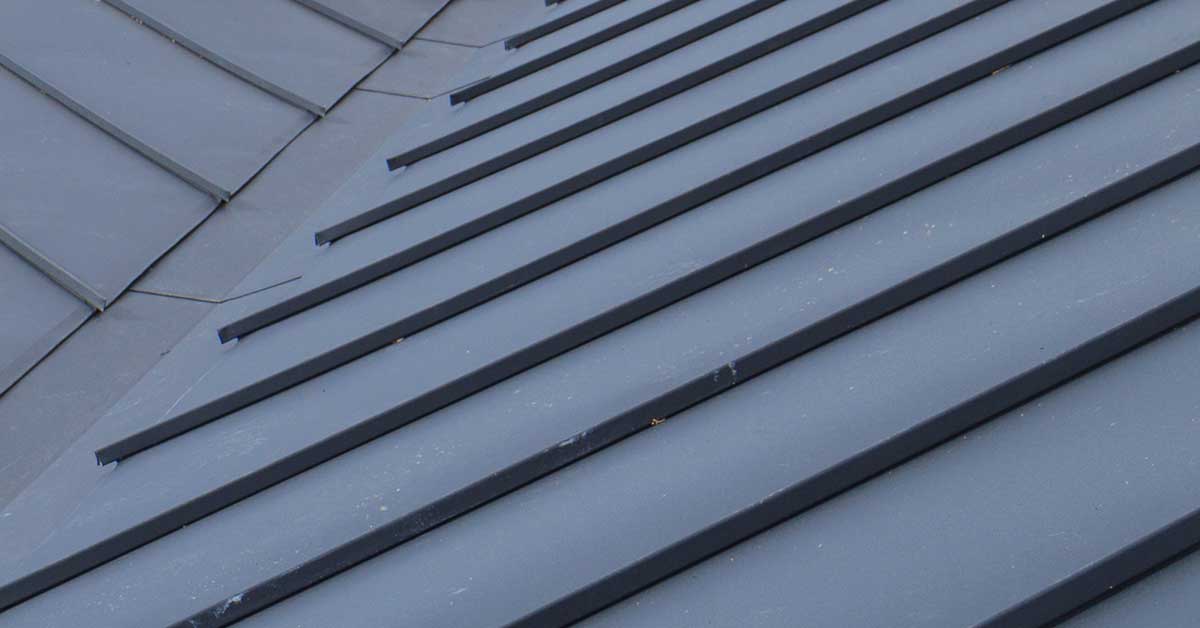
24 Oct. 2023
Metal Roofing Near Me
5 Signs You Need to Know about and Where to Find Professional for Metal Roofing Near Me
Keeping your roof in good condition is paramount to protecting your home and ensuring its longevity. If you have a metal roof, it’s important to know when enough is enough and it’s time to invest in a replacement. Knowing the signs of an aging and deteriorating metal roof can help you spot issues before they become major problems that cost more money down the road. This blog post will discuss 5 tell-tale signs that it’s time for a new metal roof, as well as where to find professional installers for metal roofing near me and for quality workmanship at competitive prices.
What to Look For to Determine if Your Existing Roof Needs Replacement
Metal roofs are renowned for their exceptional durability and impressively long lifespan, often spanning several decades. However, even the sturdiest of metals can gradually succumb to the effects of wear and tear over time. To ensure the continued integrity of your metal roof, it’s crucial to stay vigilant and watch out for certain signs that may indicate the need for a replacement. Keep an eye out for evident water stains or leaks, which may signify significant damage. Additionally, pay attention to missing or broken shingles, rust or corrosion, and an excess buildup of granules in your gutters. These can all serve as warning signs pointing toward the necessity of a new roof. By taking the proactive measure of inspecting your roof regularly, you can catch these signs early on and avoid the potential for a costlier repair job down the road. Stay proactive and safeguard the longevity and functionality of your metal roof.
Reasons to Consider a Metal Roof Over Traditional Materials
When it comes to selecting a roofing material for your home, there is a myriad of factors that should be taken into consideration. While traditional options like asphalt shingles and clay tiles have enjoyed popularity for many years, an increasing number of homeowners are now opting for metal roofing. There are numerous compelling reasons why a metal roof should be seriously considered. Firstly, metal roofs boast exceptional durability, as they can withstand harsh weather conditions and are resistant to rust and corrosion. Furthermore, metal roofing offers impressive energy efficiency, along with minimal maintenance requirements. Homeowners can find reassurance in the long warranties often associated with metal roofs as well. Additionally, metal roofing reflects sunlight, effectively reducing cooling costs in hotter climates. Not only do metal roofs provide these practical advantages, but they also lend a sleek and modern appearance to homes, appealing to discerning homeowners who prioritize aesthetics. The combination of durability, energy efficiency, low maintenance, and stylish appearance, makes metal roofs an optimal choice for those seeking a top-of-the-line roofing solution. With all these benefits in mind, it is no wonder that metal roofing has gained popularity among homeowners worldwide.
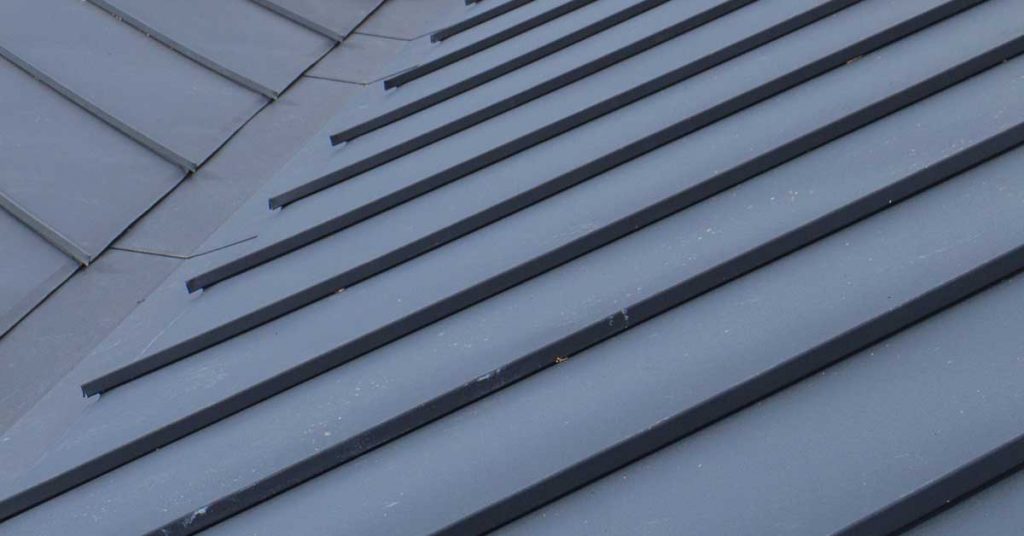
Metal Roofing Company
Overview of the Benefits of Metal Roofs
Metal roofs have gained popularity among homeowners and businesses due to their sleek and modern aesthetic, as well as a multitude of benefits over traditional roofing materials. These roofs are not only incredibly durable and long-lasting, with lifespans of up to 50 years or more, but they also boast exceptional resistance against harsh weather conditions like strong winds, heavy rain, and even snow.
One of the key advantages of metal roofs is their minimal maintenance requirements, translating to significant time and cost savings in the long run. Moreover, they are eco-friendly, as they often contain recycled materials and can be recycled themselves at the end of their lifespan. This aspect makes them an excellent choice for those seeking sustainable roofing solutions.
By choosing metal roofs, you are ensuring a reliable and cost-effective investment in a high-quality roofing system that brings aesthetic appeal, durability, and eco-friendliness together. Whether you are a homeowner or business owner, opting for a metal roof offers a smart solution for safeguarding your property and enjoying long-lasting protection.
With all these advantages, it’s no wonder why metal roofs are gaining popularity and becoming the preferred choice for individuals who value both style and functionality in their roofing systems. Invest in a metal roof today and experience the numerous benefits it has to offer.
How to Find Professional Installers Near You
When searching for professional roof installers in your area, conducting thorough research is crucial. Don’t simply settle for the initial option that appears in a Google search. Instead, invest time in reading reviews and seeking recommendations from trusted friends and family. Prioritize installers with a proven track record of delivering quality work and excellent customer service. It’s also advisable to verify if they hold any relevant certifications or licenses that demonstrate their expertise and professionalism. By carefully vetting potential installers, you can ensure that you’ll receive exceptional service for your home or business. So take the necessary steps to make an informed decision and feel confident in the quality of workmanship you’ll receive.
Tips for Hiring and Working With Professionals for Your New Roof Installation Project
Installing a new roof is a task that should be entrusted to an experienced professional roofer. By hiring a professional, you can ensure that the job is completed accurately and efficiently, using top-notch materials that guarantee long-lasting durability for your home.
To begin your roof installation project, it is crucial to conduct thorough research and find a reputable roofing contractor. Take the time to ask for references, read reviews, and verify their licensing and insurance. These steps will help you select a trustworthy contractor who will meet your expectations.
Once you have chosen a contractor, establish open communication to discuss your requirements and address any concerns you may have. Clear communication and shared expectations are vital for successful collaboration. By working closely together, you can achieve a high-quality roof that provides reliable protection for your home, year after year.
Remember, professional guidance plays a significant role in the success of your roofing project. Don’t overlook the benefits it brings. With the expertise of a skilled roofer, you can enjoy peace of mind and the assurance that your home is well-protected.
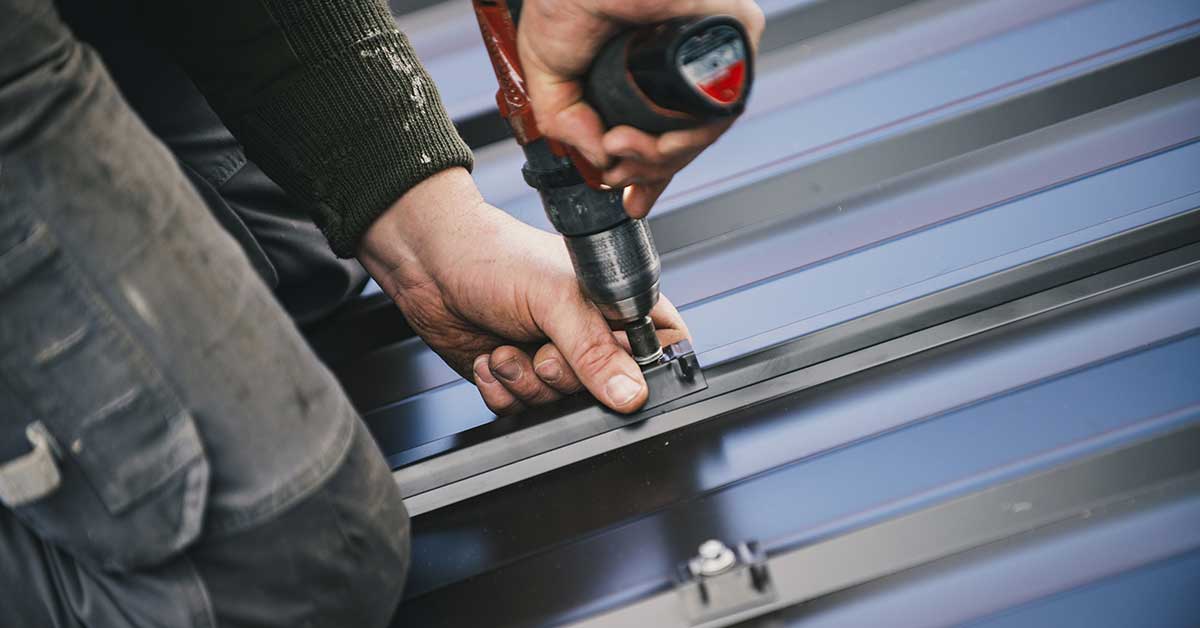
Metal Roof Repair
As you can see, the decision to replace your roof with a metal roof is one that comes with many advantages and benefits. With such potential, it’s important to make sure you find an experienced professional for the job; comparing quotes from multiple vendors is essential to bringing down the cost and ensuring that your project outcome meets your goals. Researching local services and reading through customer reviews are two great ways to start off on the right foot toward a successful project. Make sure you understand all aspects of the work that is being conducted on your roof, so there are no surprises down the line. Don’t forget—replacing your roof doesn’t have to be a risky proposition if you plan ahead and go armed with knowledge about what type of roof you need and how much your project should ultimately cost. So get started today—your new metal roof awaits!
Chattanooga Roofing Company
https://www.google.com/maps?cid=3134983317498625437
https://www.google.com/maps?cid=3134983317498625437
(423) 308-7663
- By: chattroof
- metal roofing, metal roofing companies, metal roofing contractors, commercial metal roofs, residential metal roofs, metal roofing company, metal roofing services, metal roofing replacement near me, metal roofing in my area, metal roofing repair near me, metal roofing near me, metal roofing installation
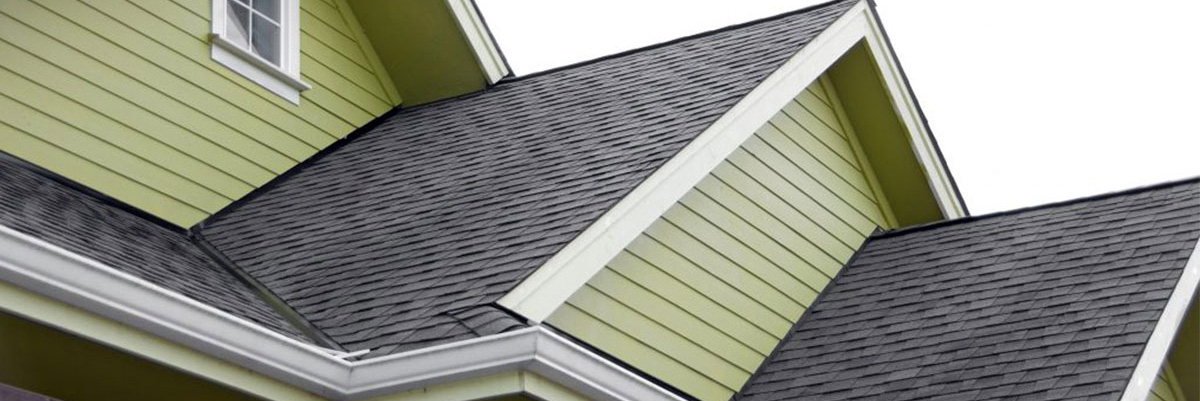
17 Oct. 2023
Roofing Company
7 Tips to Help You Choose the Best Roofing Company for Your Home
Choosing the right roofing company can make a world of difference when it comes to the quality and longevity of your home’s roof. Not all contractors are equally qualified or experienced, so it’s important to take some time to find one you can trust with this important job. To help ensure that you select the best possible contractor for your specific roofing needs, here are 7 tips on how to choose a roofing company for your next project.
Research the local roofing companies in your area and check customer reviews
When it comes to finding the right roofing company for your home or business, it’s important to do your research and check customer reviews. Searching for local roofing companies in your area is a good place to start. Once you have a list of potential candidates, take the time to read through the reviews left by previous customers. This can give you valuable insight into the company’s level of professionalism, quality of work, and overall customer satisfaction. Choosing a reputable roofing company can make all the difference in the long-term health and durability of your roof. So be sure to take your time, do your due diligence, and select a company that you feel confident and comfortable with.
Ask your friends, family, and neighbors for recommendations or referrals
When it comes to addressing your home’s roofing needs, finding the right company is crucial. An effective way to begin your search is by seeking recommendations from your friends, family, and neighbors. They can provide valuable insights based on their firsthand experiences with different roofing companies. Whether they had a positive encounter with a local contractor or encountered issues with a particular company, their referrals help streamline your search for a reliable roofing specialist. Additionally, online platforms such as review websites and social media groups focused on home improvement can offer further guidance. By gathering information and learning from others, you can make an informed decision and choose a trustworthy roofing company for your home. Taking the time to find the right professionals will ensure that you receive quality roof repairs or installations that stand the test of time.

Roofing Company
Make sure the company you choose is licensed, insured, and certified
Selecting the right roofing company for your home is a big decision. We all want to ensure that our homes are safe, and secure and that we have a good-looking roof. When it comes to choosing a roofing company, there are a few things you need to consider. The first thing you should look at is whether the company is licensed, insured, and certified. This is crucial as it shows the company meets the required standards and has the necessary qualifications to carry out the job effectively. Don’t take the company’s word for it; make sure you see their permits and certificates before hiring them. Hiring an unlicensed company might seem cheaper at first but can end up costing you more in the long run. So, make sure you hire a licensed, insured, and certified roofing company to ensure you have a safe and good-looking roof.
Look for a company that offers written warranties
Your home is one of the biggest investments you’ll make in your lifetime, so it’s important to choose a roofing company that you can trust. With so many options out there, it can be overwhelming to decide on the best one. One crucial tip is to look for a company that offers written warranties. This is a sign that they stand behind their work and are committed to providing quality service. A written warranty also gives you peace of mind knowing that you’re covered in case any issues arise after the job is complete. Take the time to research and find a roofing company that not only has a good reputation but also offers written warranties for their work. Your home deserves the best, and choosing the right roofing company can make all the difference.
Compare quotes from different roofing contractors to ensure you’re getting the best value
Investing in the right materials and workmanship is crucial for the long-term integrity of your roof. When seeking quotes from roofing contractors, remember that price alone shouldn’t be the decisive factor. Instead, evaluate the entire package, including materials, warranty, and customer service. By comparing multiple quotes, you’ll gain a better understanding of the market and make an informed decision you can trust for years to come. To ensure high-quality work, ask questions, seek referrals, and don’t shy away from negotiating to get the best value. Taking these steps will contribute to the overall durability and performance of your home’s roof, providing peace of mind and protection from the elements.
Familiarize yourself with common roofing materials and their benefits
When choosing roofing materials, it’s crucial to understand the importance and impact of your decision. Roofing is a substantial investment that can save you time, money, and headaches in the long run. In North America, asphalt shingles are the prevailing choice due to their durability, affordability, and ease of installation. However, metal roofing is gaining popularity due to its longevity and environmental sustainability, making it an excellent option for homeowners who value eco-consciousness. In warmer climates, tile roofing is widely favored for its durability and elegant appearance. By educating yourself about common roofing materials and their benefits, you can make an informed decision that will safeguard your home for years to come. So, take the time to explore your options and choose the ideal roofing material that suits your needs and preferences. Your home deserves the best protection it can get.
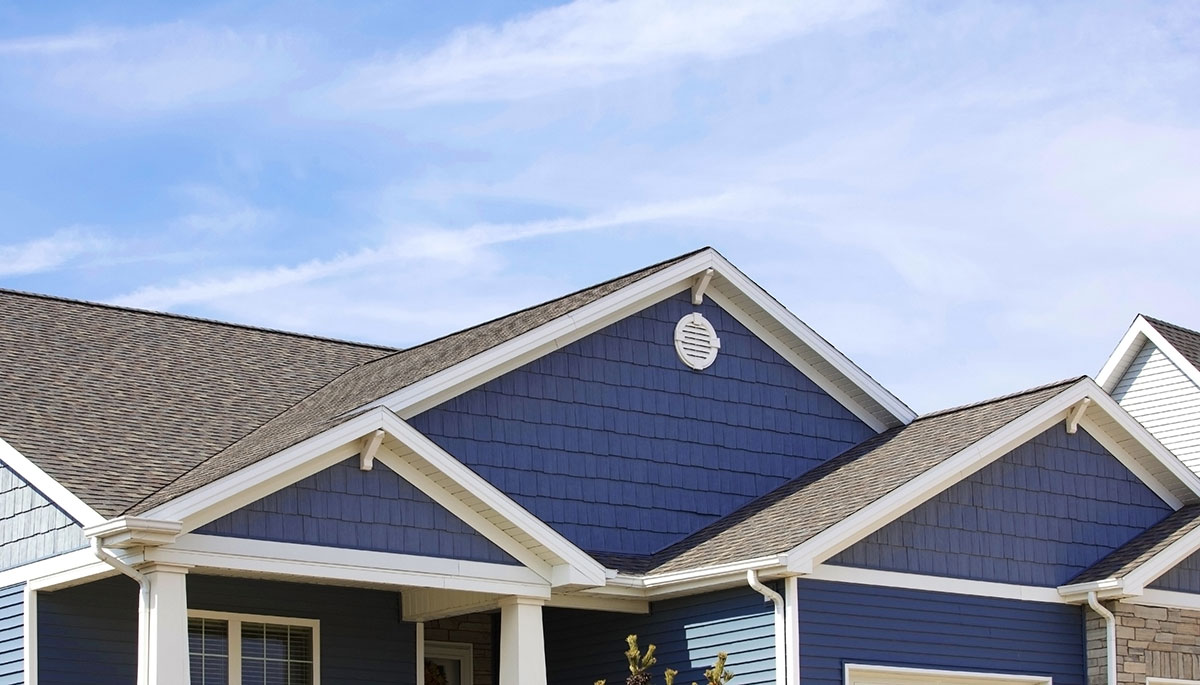
Roofing Companies
Be wary of any company that asks for a large upfront deposit before beginning work
Your home is one of your most significant investments, and you want to ensure that it remains protected for years to come. Choosing a roofing company to perform necessary roof repairs or replacements can be daunting, but there are several tips to follow to make the process easier. One essential piece of advice is to be cautious of any company that requests a sizable deposit before starting the job. It’s common for roofing companies to ask for a deposit to cover the cost of materials, but a large upfront payment could indicate that the company is not financially stable. Ultimately, you want to find a roofing company that you feel comfortable working with and that will provide exceptional service and results.
After weighing all of the various options related to finding the ideal roofing contractor for your job, the decision is yours. Always remember to do thorough research and take care to make sure that any contractor you choose is licensed, certified, insured, and offers a written warranty. Ask people in your network for referrals and read through customer reviews before signing off on a contract. Lastly, familiarize yourself with common roofing material types and their benefits, as well as be wary of any company asking for large upfront deposits before beginning work. With our tips in mind, we hope you feel more confident when pursuing roofing services to complete your project. Now it’s time for you to make a well-thought-out decision and move forward with a contractor who meets your needs. Good luck!
Chattanooga Roofing Company
https://www.google.com/maps?cid=3134983317498625437
https://www.google.com/maps?cid=3134983317498625437
(423) 308-7663
- By: chattroof
- roofing company in my area, professional roofing services near me, professional roofing services, best roofing services near me, best roofing services, roofing services near me, roofing services, reputable roofing company, roofing company near me, reliable roofing company, roofing company, local roofing company
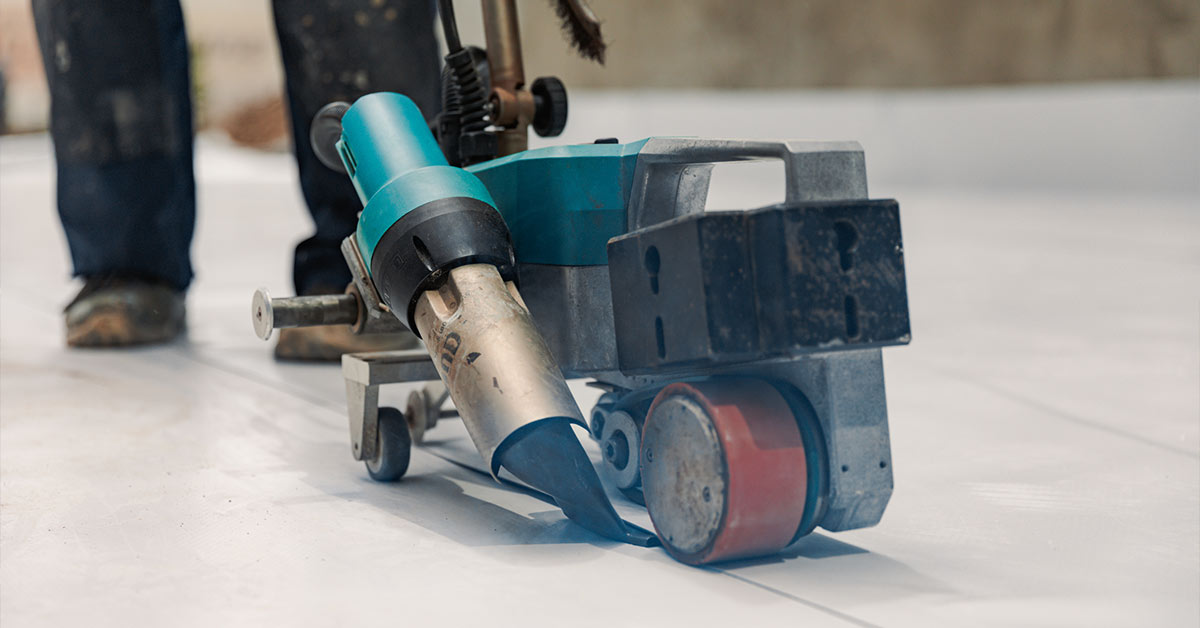
16 Oct. 2023
What Type of Commercial Roofing Material Should You Choose?
Selecting the right commercial roofing material is more than just a decision; it’s an investment in the safety, value, and longevity of your building. Your roof is your first line of defense against the elements, and the material you choose can make a significant difference in how well your property is protected. But, what type of commercial roofing material should you choose? Let’s look at that question.
What Type of Commercial Roofing Material Should You Choose?
Every option has its pros and cons, influencing factors like durability, maintenance, and cost. It’s not just about aesthetics or price; it’s about ensuring a steadfast shelter for your business. So, keep reading to learn the crucial factors behind choosing the best roofing material and make an informed decision that safeguards your property’s future.
Roofs, Materials, & Their Types
1. Built-Up Roofing (BUR) Membrane
Built-Up Roofing (BUR) is a traditional roofing system comprising several layers of bitumen and fabrics that hold them together. Usually, these layers are put on top of each other to make a strong, waterproof membrane. Thus, BUR roofing is famous for lasting a long time and handling harsh weather, so you can use it on flat or low-sloped roofs.
2. Metal Roofing
Metal roofing is often used on commercial buildings because it lasts long and doesn’t need much upkeep. It comes in many materials, such as steel, aluminum, and copper. So, metal roofs last a long time and reflect sunlight, which lowers the cost of cooling.
3. Spray-on Silicone
Spray-on Silicone roofing is a seamless and flexible option, and it cures into a silicone rubber membrane. Also, it offers excellent UV resistance and is highly durable. Thus, this roofing material is ideal for roofs with irregular shapes or areas that are difficult to reach.
4. Thermoplastic PVC & TPO Roof Membrane
Thermoplastic PVC and TPO roof membranes are single-ply systems that save energy and resist chemicals, holes, and UV rays. Also, they are lightweight and easy to install, making them a cost-effective option for commercial roofs.
5. Shingle Roofing
Shingle roofing is a versatile option suitable for pitched roofs. Commercial shingle roofs can be made of asphalt, wood, or composite materials. Also, they offer a wide range of styles and colors, allowing for customization to match your building’s aesthetic.
6. Thermoset EPDM Roof Membrane
Thermoset EPDM roof coverings last a long time. They are often ideal on low-slope roofs and are famous for lasting long and being easy to keep up.
Considerations for Choosing Roofing Material
When choosing a roof material, you should think about things like the style of your building, the weather, your budget, and how often you need to maintain the roof. Also, emphasize how long you need the material to last, and consult with your professional roofing contractor about specifics like installation costs and energy savings to find a material that meets both your practical and aesthetic needs.
Conclusion
Choosing the appropriate commercial roofing material is pivotal in safeguarding your investment and ensuring it is resilient against time and nature. If you need further assistance, reach out to Chattanooga Roofing Company. Our experts will guide you through making an informed decision, ensuring that your commercial roofing is not only a protective layer but a valuable asset enhancing your property’s worth and operational efficiency.
- By: chattroof
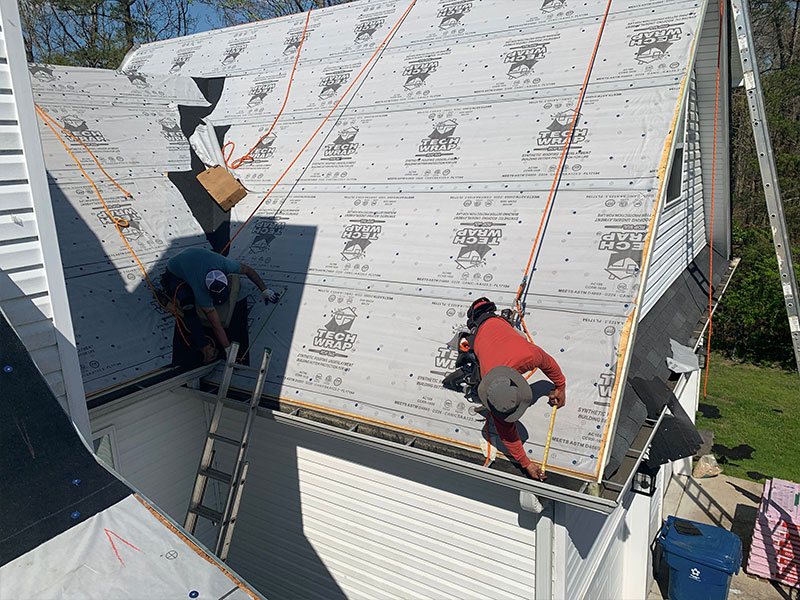
11 Oct. 2023
How to Find the Most Reliable Roofing Companies Near Me to Improve Your Home
How to Find the Most Reliable Roofing Companies Near Me to Improve Your Home
If you’re looking to improve the look and value of your home, one area to consider investing in is high-quality roofing. A reliable local roofer can make all the difference when it comes to making sure your structure is secure and strong for years to come. But with so many roofing companies near me out there vying for your business, how do you know who’s truly trustworthy? In this blog post, we will provide some key tips that can help guide you toward finding a professional roofer who offers quality services at an affordable price. Read on as we explain not only why hiring reputable workmanship should be a top priority but also several essential steps to weed through potential contractors before deciding which one is best suited for your needs.
Research the local roofers in your area to find one that suits your needs
When it comes to choosing the right roofer for your home or business, conducting thorough research is crucial. Taking the time to explore and evaluate local roofing companies in your area can greatly contribute to finding a provider that not only meets your requirements but also delivers the level of service you anticipate. To ensure a successful outcome, consider several factors when selecting a roofer. Look for a company with a strong reputation for exceptional workmanship, timely project completion, and outstanding customer service. Additionally, don’t hesitate to request references and examine online reviews to gain insight into the experiences of previous clients. By diligently undertaking these research efforts, you can confidently make an informed decision and select a reliable and trustworthy roofer that aligns perfectly with your roofing needs. Choosing the right professional ensures that your roofing project is in capable hands, providing you with peace of mind and the highest quality results.
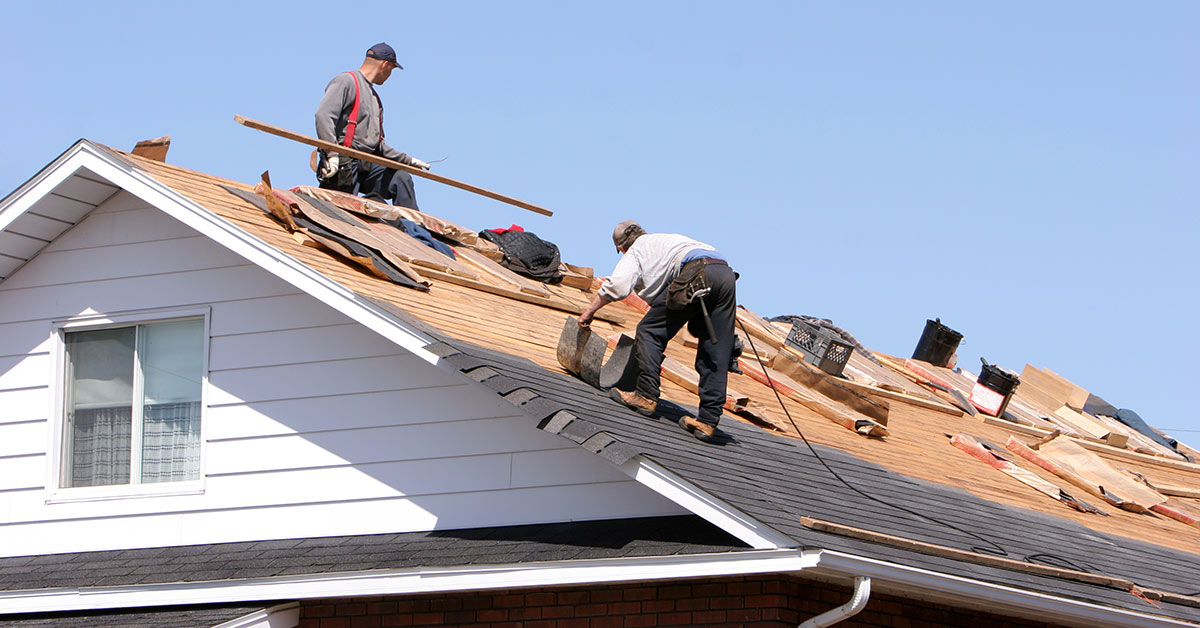
Roofing Companies Near Me
Ask for references from past customers and read online reviews
A sturdy roof is essential to keep your home safe from the elements, but finding reliable local roofers can be a daunting task. However, with the right approach, you can find the perfect team to improve your home. One approach is to seek recommendations from friends and family members who have recently had their roofs repaired or replaced. This can provide you with valuable insights into a roofer’s workmanship, reliability, and professionalism. Another approach is to research local roofers online and read reviews from previous clients. Check for certifications and licenses to ensure they are qualified to handle your roofing needs. By taking the time to find the most reliable local roofers, you can have peace of mind knowing your home is in good hands.
Check the licensing and certification of the roofer
Hiring a roofer can be a big decision, and it’s important to ensure that the professional you choose is licensed and certified. By doing so, you can have peace of mind knowing that the individual has met certain qualifications and standards set forth by the industry. This can help minimize the risk of potential problems and ensure that the work is done properly. Before hiring a roofer, take the time to check their licensing and certification. You can do so by contacting the appropriate governing body or researching online. It may take a little extra effort, but ultimately, taking this step can save you a lot of time, money, and headaches in the long run.
Find out about their experience in roof installation and repair
If you’re looking to improve your home with a new roof, finding the most reliable local roofers is crucial. One way to gauge their reliability is by finding out about their experience in roof installation and repair. Do they have a solid track record of successfully completing roofing projects? Have they worked on roofs similar to yours? These are important questions to ask when conducting your research. But don’t just stop at their word – get references, read reviews, and check their credentials to ensure that they have the expertise to tackle your roofing needs. With a little bit of extra effort, you can find a trustworthy and skilled roofing team that will improve the value and functionality of your home.
Evaluate their safety policies and insurance coverage
Ensuring the safety of your employees and customers while they are on your property is crucial for any business. With that in mind, evaluating your safety policies and insurance coverage is a wise decision to make. A thorough analysis can help you identify potential safety hazards, provide solutions to mitigate any risks and ensure your insurance policies provide adequate coverage in case of unexpected incidents or accidents. Taking proactive measures to enhance your safety policies and insurance coverage not only protects your business but also demonstrates your commitment to the well-being of those who visit your establishment.
Get a quote for the cost of materials and labor for the job
A new roof can be a major investment for any homeowner, but the cost of materials and labor can vary greatly depending on the type of roof and the size of your home. Whether you are replacing an old roof or building a new home, it’s important to get an accurate quote for the cost of the job. A reliable roofing contractor will take into account the particular features of your home and offer you a detailed breakdown of the materials and labor involved. This can help you make an informed decision about your roofing project and ensure that you stay within your budget. So, if you’re considering a new roof, don’t hesitate to get a quote and get started on your project!

Roofing Companies Near Me
Compare and contrast different roofers to make sure you get a good deal
When choosing a roofer, conducting thorough research and comparing options is crucial to secure the best deal. Start by evaluating the qualifications and certifications of each roofer to ensure they possess the necessary skills and experience. Additionally, take the time to read customer reviews and request references to gauge the professionalism and reliability of each roofer. Comparing pricing and obtaining detailed estimates from multiple roofers ensures a fair and competitive price. By carefully analyzing and contrasting different roofers, you can confidently select a professional who will deliver quality results at a reasonable cost. This meticulous process guarantees that your roofing needs are met efficiently and effectively. Don’t rush the process; take the time you need to make an informed decision.
In conclusion, it’s essential to do research before selecting a roofer for your home or business. Take the time to compare and contrast different contractors in your area, and evaluate their qualifications and references carefully. Ask about their experiences in roof installation and repair, safety policies, and insurance coverage, and get a quote that gives you an accurate cost estimate. Doing your homework now can help save you both headaches and money in the long run. So take your time – review potential roofers thoroughly – make sure you find the one that will meet all your needs. Investing in quality work now is guaranteed to pay off dividends down the road!
Chattanooga Roofing Company
https://www.google.com/maps?cid=3134983317498625437
https://www.google.com/maps?cid=3134983317498625437
(423) 308-7663
- By: Collaborate
- roofing companies near me, hire roofing companies near me, commercial roofing companies near me, roofing companies near me prices, professional roofing companies near me, roofing companies near me cost, local roofing companies near me, roofing companies near me rates, roofing companies in my area, prices of roofing companies near me, roofing companies nearby, cost of roofing companies near me, best roofing companies nearby, rates of roofing companies near me, best roofing companies near me, hiring roofing companies near me
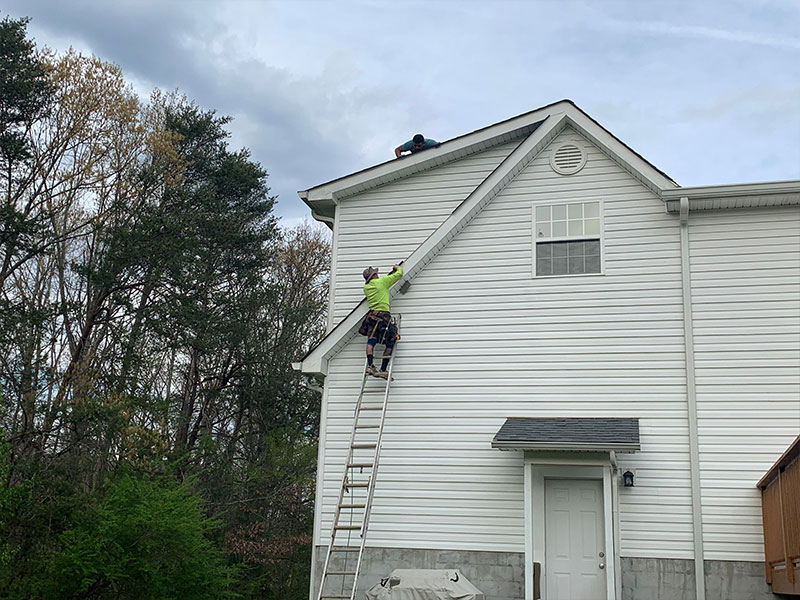
11 Oct. 2023
Roofer Repair Near Me
Finding a Qualified Roofer Repair Near Me – A Guide to Locating the Best Roofing Services
Finding a qualified and reliable roofer is essential to getting the job done right. You know that when it comes to your home’s roof, there is no room for error or risk. That’s why taking the time to find an experienced individual or local business that can handle all of your roofing needs is so important. This guide provides you with key steps on how to conduct thorough research into the various roofers repair near me, so you can make an informed decision and get top-notch service for your roofing project. Here, we’ll review some common questions about hiring a reputable contractor as well as other tips on choosing the best one near you!
Understand the basics of roofing and do some research to determine what kind of roof will work best for your home
Roofing is an essential aspect of any home’s structure, serving as a vital shield against the elements. Choosing the right type of roof plays a significant role in the durability and longevity of a house. To make an informed decision, it’s crucial to grasp the basics, including the various materials available and their unique benefits and drawbacks. Factors such as climate, roof pitch, and budget should guide your selection process. Conducting comprehensive research empowers you to find the perfect roofing solution for your specific needs.
When delving into this topic, seek advice from professional roofing contractors who bring valuable expertise and guidance. Their insights can prove invaluable in navigating through the options. With careful consideration and the right type of roof, you can ensure the long-term protection of your home and the well-being of your loved ones for years to come. The investment in a sturdy and reliable roofing system is worth it, as it provides peace of mind and safeguards your household from the harshest weather conditions.
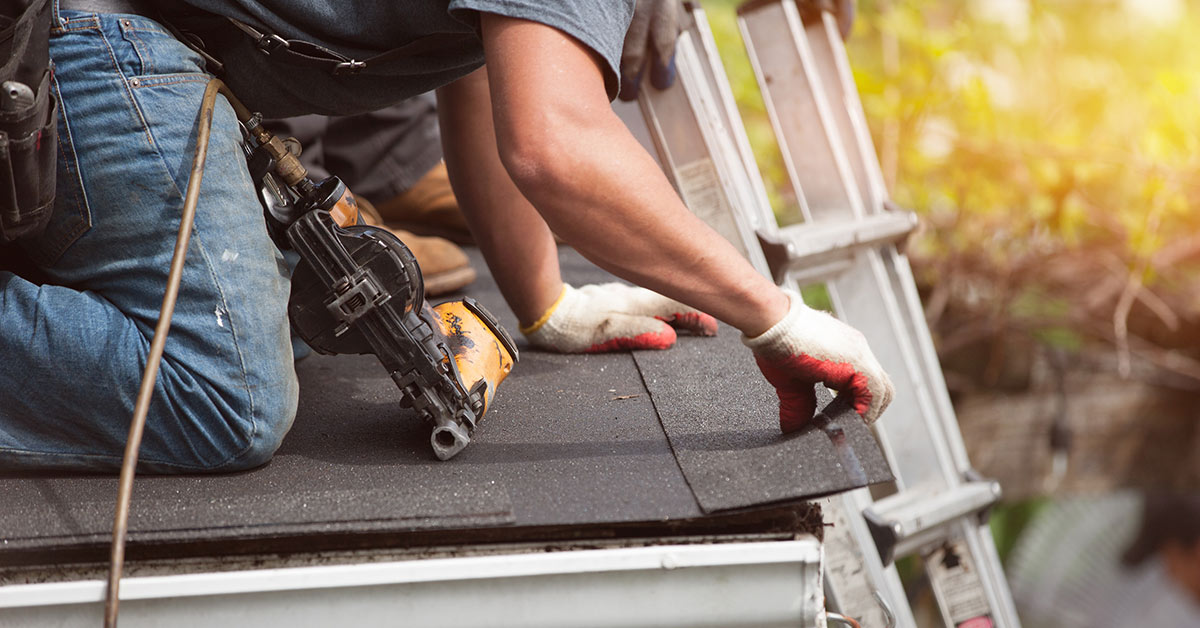
Roofer Repair Near Me
Consider local, licensed contractors that have a good reputation in your area
The roof of your home is a crucial element that shields you and your belongings from the ever-changing weather conditions. That’s why finding a reliable and skilled roofer requires diligent research and consideration. Start your search by seeking out local contractors who hold a valid license and boast a stellar reputation within your community. These professionals possess the expertise to handle roofs in your specific climate and can offer personalized recommendations tailored to your unique requirements.
Investing your time in finding a top-notch roofer will pay off in the long run by ensuring the durability and safety of your home. It can even save you valuable time and money down the line. Don’t overlook the significance of a quality roofer when it comes to the longevity and protection of your cherished residence. So, take the necessary steps to hire a reputable professional and safeguard your home against the elements.
Check references and read online reviews of any roofer you’re considering
Choosing the right roofer for your home or business can feel overwhelming, but it’s crucial to invest time in thorough research. By checking references and reading online reviews, you can ease some of the stress and gain valuable insights. Taking the opportunity to do your due diligence provides a clearer understanding of a roofer’s work quality and professionalism. Moreover, customer reviews offer firsthand perspectives that help set realistic expectations and make informed decisions. Remember, rushing the process may lead to making the wrong choice. Take the time to dig deeper, ensuring you hire a roofer who will deliver exceptional results. Don’t compromise on the importance of a reliable roofer for your property. With careful consideration, you can find the perfect fit.
Get multiple quotes from different professionals with details about the warranties they offer and their estimated timelines
Taking care of your roof is crucial as it plays a vital role in protecting your home. When it comes to finding a qualified roofer, the decision shouldn’t be taken lightly. Fortunately, you have a variety of professionals near you who can assist you. To make an informed choice, it’s important to obtain multiple quotes. This will allow you to compare prices and the services they offer. Additionally, consider professionals who provide detailed information about their warranties. Protecting your roof for years to come is imperative. Furthermore, inquire about estimated timelines to help you plan accordingly. Remember, settling for just any roofer won’t suffice. Take the time and effort to find someone who suits all your needs and can guarantee the long-lasting condition of your roof. Your home’s safety and security depend on it.
Ask to see certifications and licenses before agreeing to any contract
Having a high-quality roof is vital for protecting your home and loved ones from the harsh elements. Therefore, it is crucial to find a skilled roofer who can provide reliable services. To ensure you receive the best possible service, it is essential to ask for certifications and licenses before making a hiring decision. A qualified roofer should be able to provide evidence of their training and expertise, so don’t hesitate to inquire about it.
Taking the time to find the right professional can have long-term benefits, including saving you time, money, and stress. A skilled roofer with proper credentials and experience will not only provide a durable and reliable roof but also offer valuable advice on maintenance and repairs. So, invest in thorough research and make an informed decision when choosing a roofer.

Roofer Repair Near Me
Remember, the quality of your roof plays a significant role in the overall safety and comfort of your home. Don’t compromise on hiring the right professional who can ensure a strong and resilient roof that will stand the test of time.
Make sure the contractor is willing to provide you with an itemized list of materials used for the job and labor costs associated with it
When it comes to finding a qualified roofer near you, there are a few key things to keep in mind before signing on the dotted line. One of the most important factors to consider is whether or not the contractor is transparent about the costs associated with the job. It’s always a good idea to ask for an itemized list of the materials used for the job and the labor costs associated with it. This way, you can ensure that you’re receiving a fair price for the work being done. A reputable roofing contractor should have no trouble providing you with this information, and it’s a sign that they take their job seriously and want to earn your trust. So, before you embark on your search for a roofer in your area, be sure to keep these tips in mind to ensure that you’re working with someone who is reliable, honest, and will provide top-quality workmanship.
With a roofing project, understanding the basics, asking the right questions, and trusting your gut can go a long way in ensuring you find the best contractor for your needs. Doing your due diligence throughout the process is important if you want to avoid any nasty surprises later down the track. Do not be afraid to make inquiries and take as much time as you need to thoroughly research each potential option. When in doubt, always ask an expert for their opinion and take all necessary steps to ensure you choose quality over quantity. Consider your budget, desired materials, labor rates, and warranties when comparing multiple quotes. Lastly, don’t forget to call on reliable references and read online reviews before signing any contracts. In conclusion, follow these key tips to pave the way toward finding a high-quality roofer with whom you can enjoy a long-term relationship.
Chattanooga Roofing Company
https://www.google.com/maps?cid=3134983317498625437
https://www.google.com/maps?cid=3134983317498625437
(423) 308-7663
- By: chattroof
- roofer repair near me, commercial roofer repair near me, roofer repair near me prices, professional roofer repair near me, roofer repair near me cost, local roofer repair near me, roofer repair near me rates, roofer repair in my area, prices of roofer repair near me, best roofer repair in my area, cost of roofer repair near me, roofer repair nearby, rates of roofer repair near me, best roofer repair nearby, hiring roofer repair near me, best roofer repair near me, hire roofer repair near me
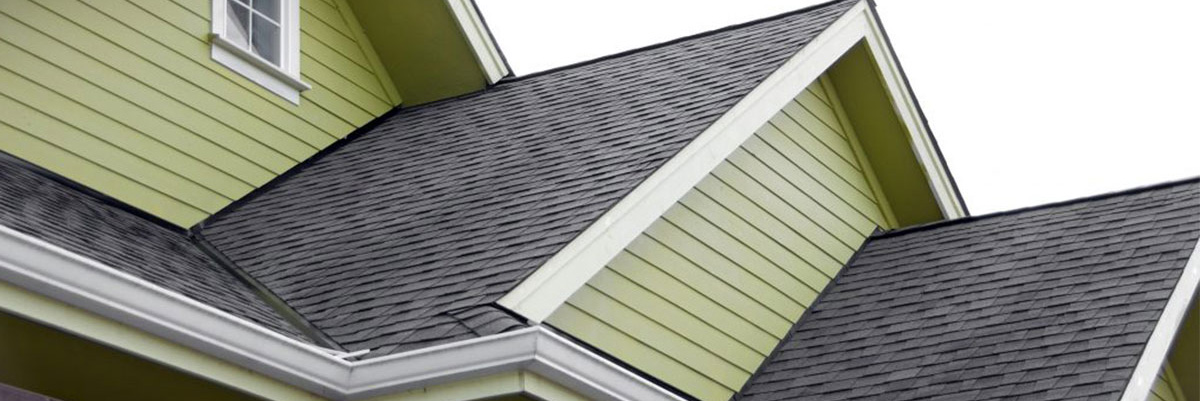
10 Oct. 2023
Roofing
All You Need to Know About Roofing and How to Choose the Best Contractor
When it comes to making sure your roof is in tip-top shape, there’s more to consider than just the cost of materials. Poor workmanship can result in costly damage and repairs down the line. To ensure you get reliable service that meets all of your needs, it’s important to select the right roofing contractor for the job. But before you hire someone, there are a few crucial things you should understand about roofing so you make an informed decision for your home or office. In this blog post, we’ll walk through what you need to know about how roofs function and why quality materials and labor matter—plus provide useful tips on finding a reputable company with competitive rates.
What is roofing and why is it important for your home
Roofing is an essential part of any home construction project, as it serves as the first line of defense against external elements. A well-built roof not only offers protection from natural disasters such as rain and snow but also enhances the aesthetic appeal of your property. The importance of roofing cannot be understated, as faulty installation or repair can lead to significant water damage, electrical problems, and even health hazards due to mold growth. Regular maintenance and inspection of your roofing system is necessary to ensure the safety of your home and the people residing in it. Therefore, investing in high-quality roofing materials and professional services is crucial to safeguarding your home in the long term.
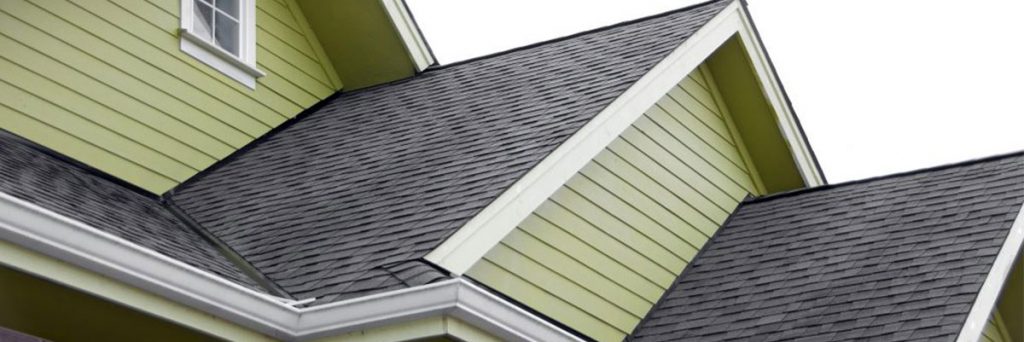
Roofing Services
Different types of roofing materials and which one is best for your home
Choosing the right roofing material for your home is a crucial decision, as it not only protects your home from the elements but also adds to its overall aesthetic appeal. With so many different types of roofing materials available in the market, each with its own set of advantages and disadvantages, it can be overwhelming to decide which one is best suited for your home. From traditional asphalt shingles to eco-friendly options such as metal and clay tiles, each roofing material has its own unique characteristics and benefits. Consulting with a professional roofing contractor can help you identify the best roofing material for your home based on factors such as your climate, budget, and personal preferences. Ultimately, choosing the right roofing material can help ensure that your home remains durable and beautiful for years to come.
Things to consider when choosing the right contractor to install your roof
Installing a roof is a major investment and an essential part of any home or building. When choosing a contractor for this crucial project, there are several things to consider to ensure that you receive quality workmanship and the best value for your money. Firstly, do your research and check the contractor’s credentials, such as licenses, certifications, and insurance. You should also ask for references and reviews from previous clients to gauge their level of expertise and reliability. Price should not be the sole determinant; instead, ensure that the contractor provides a detailed and transparent estimate that covers all the necessary tasks and materials. Additionally, consider the warranty offered and the contractor’s after-sales services. Choosing the right contractor may take time, but it is a crucial step in achieving a sturdy and long-lasting roof for your home or building.
How to prepare for a successful roof installation
Installing a roof is a major undertaking that should not be taken lightly. It’s important to prepare properly to ensure a successful outcome. Start by making sure you understand the scope of the project, including the type of roof you need, the materials required, and the timeframe for completion. Thoroughly research roofing contractors to find one that is licensed, insured, and has a good reputation. Ask for references and check online reviews to make sure they have experience and expertise in your specific type of roofing. Before the installation, clear the area around your home to ensure there is enough space for the contractor’s equipment and workers. Finally, make sure you have a plan in place for protecting your home during the installation process, such as covering windows and landscaping. By taking these steps, you can prepare thoroughly and enjoy a successful roofing installation.
Common mistakes people make when installing a new roof
Installing a new roof is a significant undertaking that requires careful consideration. Unfortunately, many people make common mistakes during the process, leading to costly repairs in the future. One of these mistakes involves underestimating the importance of proper ventilation. Inadequate ventilation can result in moisture buildup, which, in turn, can lead to the growth of mold. Another mistake is using improper flashing techniques, which can allow water to seep into the home and cause structural damage. Additionally, selecting the wrong materials for the specific climate is a common error that can lead to premature wear and tear. To avoid these pitfalls, it is crucial to work with experienced professionals who not only understand these potential issues but also know how to navigate them effectively. By doing so, you can ensure that your new roof performs well and remains in good condition for years to come.
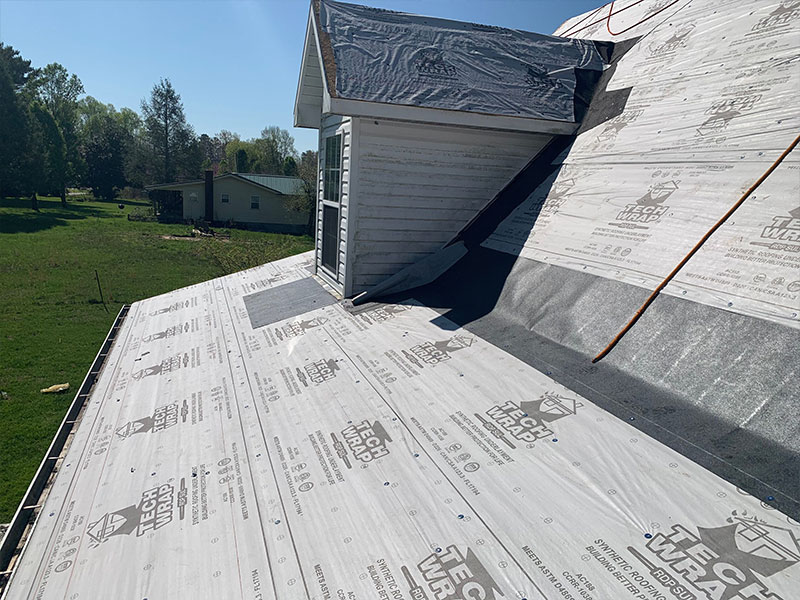
Residential Roofing Services
Tips to maintain your new roof and get the most out of its lifespan
Your new roof is a significant investment in your home, and it can last for decades if you take proper care of it. To ensure that your investment lasts as long as possible, there are several tips that you should follow when it comes to maintaining your new roof. First, make sure to schedule regular inspections with a professional roofing contractor. This will help identify and address any issues before they become costly repairs. Additionally, make sure to keep your roof clean and clear of debris, as this can cause damage over time. Finally, be cautious when it comes to heavy storms or wind, as they can cause significant damage to your roof. By following these tips, you can get the most out of your new roof and help it last for many years to come.
Overall, investing in a quality roof is an important undertaking. Taking the time to familiarize yourself with your options can help you make the best choice when it comes to selecting the right materials and contractors. It’s also important to keep in mind that proper preparation and maintenance are key for getting the most out of your new roof and making sure it will last a long time. Choosing the right materials, and contractor, being prepared for the installation project, and following some basic maintenance tips can all play a part in ensuring a successful installation. With these factors taken into account, you can rest assured that your new roof will provide protection from harsh weather elements for many years to come. If you’re considering installing a new roof or just want to know more about this important home upgrade, don’t hesitate to get in touch with a professional contractor today – they are always available to answer any of your questions and help guide you through this process!
Chattanooga Roofing Company
https://www.google.com/maps?cid=3134983317498625437
https://www.google.com/maps?cid=3134983317498625437
(423) 308-7663
- By: chattroof
- roofing, professional roofing near me, professional roofing sevices, best roofing services near me, best roofing services, roofing services near me, industrial roofing near me, roofing services, local roofing companies, roofing company near me, commercial roofing, roofing company, residential roofing

01 Oct. 2023
Best Roofers Near Me Chattanooga Tennessee
Best Roofers Near Me Chattanooga Tennessee
Are you planning to re-roof your home and looking for reliable roofers near Chattanooga Tennessee? You’re not alone – choosing the right contractor can be a difficult process, as it requires finding someone with both the skills and experience to do a quality job. But getting the best roofing services doesn’t have to be stressful! In this blog post, we’ll provide an in-depth look at what factors to consider when selecting local roofers and tips on how to find the right contractors for your project.
Exploring Your Options – Comparing Different Types of Roofers
When considering roofing contractors, it’s important to explore your options and compare different types of roofers. This can help you determine the right professional for your specific roofing needs. To begin, it’s essential to understand the different types of roofers that are available.
Second, commercial roofers are ideal for businesses in need of roof repairs or replacements. These professionals have experience working with large-scale projects such as office buildings, shopping centers, and warehouses. They also have knowledge of different roofing materials and can recommend the most suitable one for your building.
Third, industrial roofers specialize in installing and repairing roofs on factories, manufacturing plants, and other industrial structures. They have experience dealing with unique structures, safety regulations, and specialized roofing materials such as metal, asphalt, and rubber.
Finally, there are freelance or independent roofers who work on smaller residential and commercial projects. These professionals have varied experience and can provide customized solutions for your specific roofing needs.
Choosing a Roofing Company: What You Need to Know
If you’re in need of a roofing company, it’s crucial to make an informed decision and do your research. Don’t settle for just any company when it comes to such an important investment. Here are the key factors to consider:
- Experience and Qualifications: Look for a company with a proven track record and a team of licensed professionals. They should also have certifications and accreditations from reputable organizations.
- Reputation: Check online reviews and ask for references. A trustworthy company will have satisfied customers and a solid reputation in the community.
- Warranty and Guarantees: Make sure the company offers a warranty on their workmanship and materials. This ensures any issues will be addressed.
- Materials and Equipment: The quality of materials and equipment used directly affects the lifespan and durability of your roof. Look for a company that uses high-quality materials and modern equipment.
- Communication and Customer Service: Choose a company that communicates well and values your needs. They should be responsive, keep you informed, and provide excellent customer service.
By considering these factors, you can confidently hire a reliable roofing company that delivers high-quality workmanship and exceptional customer service.
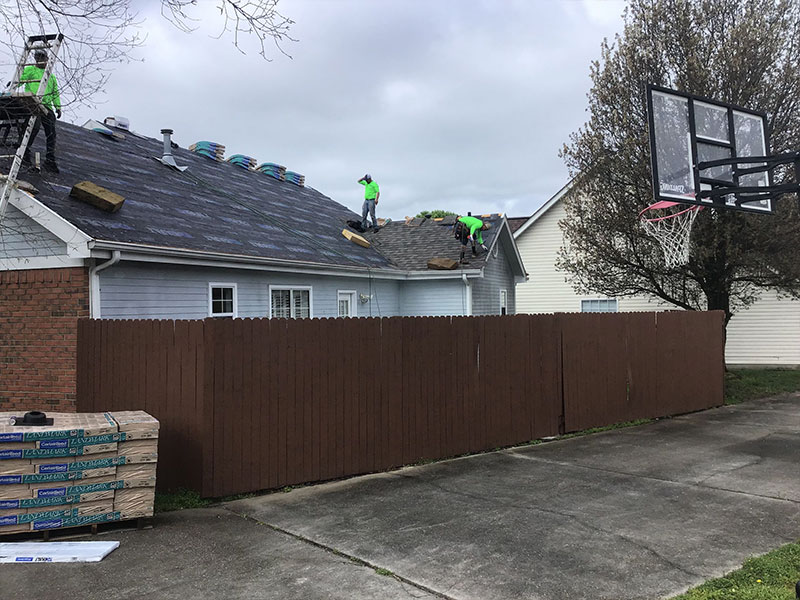
Best Roofers Near Me Chattanooga Tennessee
Getting the Right Price – Tips on Negotiating with Local Roofers
When it comes to finding the right roofer and getting the right price, it can be a challenging task. However, negotiating with local roofers can help you find the best deal that suits your budget and needs. Here are some tips to help you negotiate like a pro:
- Shop around: The first step to getting the right price is to shop around and compare quotes from different local roofers. This will give you an idea of the average cost and help you identify any outliers.
- Know what you want: Be clear about your roofing needs and requirements before you start negotiating. This will help you articulate your needs better and avoid any confusion during the negotiation process.
- Don’t settle for the first offer: Remember that the first price offered by a roofer is not necessarily the best or final price. Don’t be afraid to negotiate and ask for a better deal that meets your needs and budget.
- Ask for references: Before you agree to any deal, ask the roofer for references from previous clients. This will help you get an idea of the quality of their work and their reliability as a service provider.
- Consider the materials: The quality and type of roofing materials used can have a significant impact on the overall price. Make sure you understand the materials being used and their impact on the cost.
- Be respectful: Remember to be polite and respectful during the negotiation process. This will help you build a good relationship with the roofer and increase your chances of getting a good deal.
By following these tips and being prepared, you can secure a deal that meets your needs and budget.
Questions to Ask Potential Contractors – What to Look Out for Before Making a Decision
When you’re seeking to hire a roofing contractor for a project, it’s critical to ask them the right questions to evaluate their suitability. To make an informed decision, consider the following:
- What is your level of expertise in this field? Experienced contractors will have a better understanding of industry practices, safety measures, and common challenges, and should be able to provide information about previous projects they’ve handled.
- Can you give an accurate estimate of the project’s timeline and budget? A competent contractor should evaluate the project and provide you with a realistic estimate that includes contingencies for unforeseen delays, difficulties, and expenses.
- What insurance coverage do you have? You must verify that your contractor has adequate liability insurance to cover any potential damage or injury that may occur during the project.
- What measures do you take to ensure safety on the site? A responsible contractor should take necessary steps to ensure that their work doesn’t pose a threat to your property or the health of people living or working nearby.
- Are there any necessary permits or approvals required for this project? A qualified contractor should know which permits or licenses from local authorities are needed for a specific project and should be able to acquire them on your behalf.
- Can you provide references or reviews from previous clients? A trustworthy contractor would be proud to share positive feedback from happy clients and have a track record of delivering projects on time and within budget.
- What is your preferred method of communication during the project? An effective communication strategy is critical to ensure the project runs smoothly, and the contractor should be willing to keep you updated regularly.
By asking these questions, you’ll be able to evaluate potential contractors and make a well-informed decision that can help you avoid costly mistakes and ensure the success of your project.
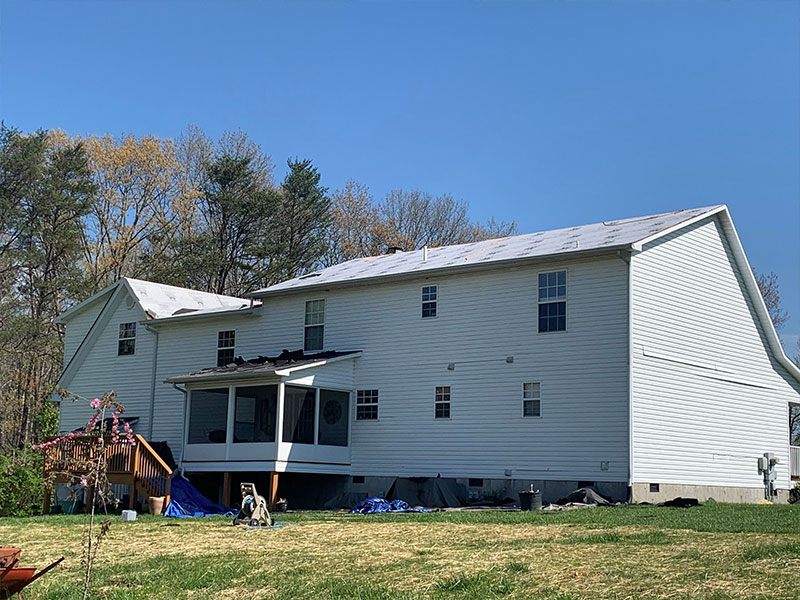
Best Roofers Near Me Chattanooga Tennessee
Maintaining and Inspecting Your Roof: The Key to Safety and Savings
Respecting your rooftop is more than just a good practice – it’s essential for keeping your home or business safe and avoiding expensive repairs. With proper maintenance and inspection practices, you can ensure your roof stays in great shape and remains visually appealing.
Firstly, regular inspections are a must. By identifying and addressing damage or wear and tear early on, you can prevent minor issues from turning into major headaches. Look out for gaps, loose shingles, cracks, and leaks – even seemingly small damage can have disastrous consequences if left untreated.
Secondly, don’t neglect roof cleaning. Regularly removing debris, dirt, and fallen leaves is crucial for preventing clogged gutters. When gutters are clogged, water can build up and seep into your home or business, causing significant damage. Also, be mindful of fallen branches or other physical debris that can potentially harm your roof and lead to leaks.
Additionally, proper ventilation is vital to maintain the structural integrity of your roof. Inadequate ventilation can result in temperature fluctuations that cause shingles to warp or crack, which could ultimately necessitate costly repairs or a full replacement.
Lastly, entrust roof maintenance and inspection to professionals. Their expertise allows them to spot any damage or potential issues early on, preventing them from escalating. Moreover, professionals have the necessary tools and equipment to handle repairs, ensuring your roof remains sturdy and secure.
Following proper maintenance and inspection practices is crucial for extending the lifespan of your roof, preserving its visual appeal, and saving you money.
All in all, it is important to remember that the roof of your home is one of the most important components in protecting its contents and structure. It is also a very large investment, so being informed about what options are available, what price you should pay, who you should hire, and how to properly maintain and inspect it is essential. Utilize the tips provided in this blog post to ensure that you make the right decision when it comes to your roofing needs. If you have any additional questions or would like further advice on choosing and working with your roofer, be sure to reach out to our team and we’d be happy to help.
- By: chattroof
- roofers near me Chattanooga Tennessee, best roofers Chattanooga Tennessee, best roofers Chattanooga Tennessee near me, roofers nearby Chattanooga Tennessee, best roofers Chattanooga Tennessee in my area, roofers Chattanooga Tennessee, best roofers in Chattanooga Tennessee, best roofer near me Chattanooga Tennessee, best roofers nearby Chattanooga Tennessee, commercial best roofers near me Chattanooga Tennessee, best roofers near Chattanooga Tennessee, professional best roofers near me Chattanooga Tennessee, best roofers near me Chattanooga Tennessee, local best roofers near me Chattanooga Tennessee, roofers near Chattanooga Tennessee, best roofers Chattanooga Tennessee nearby
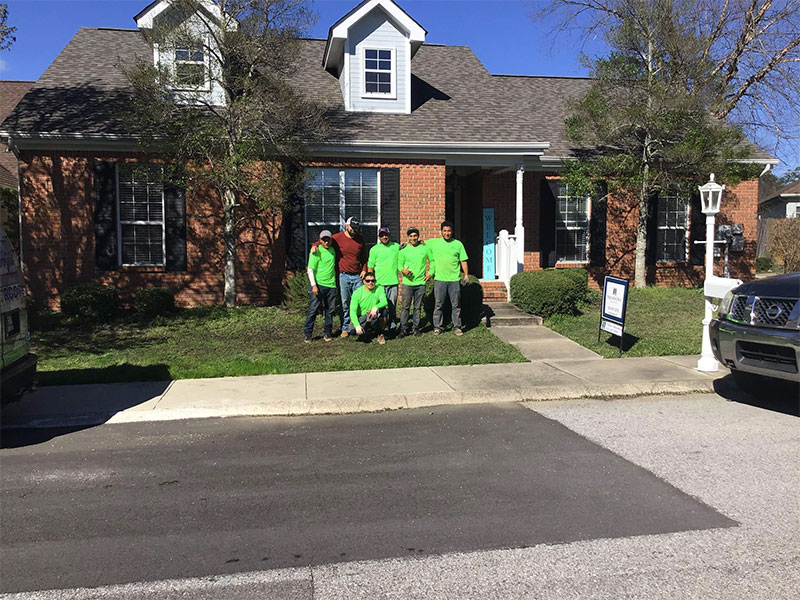
01 Oct. 2023
Best Roofers Near Me Hixson Tennessee
Best Roofers Near Me Hixson Tennessee
Are you planning to re-roof your home and looking for reliable roofers near Hixson Tennessee? You’re not alone – choosing the right contractor can be a difficult process, as it requires finding someone with both the skills and experience to do a quality job. But getting the best roofing services doesn’t have to be stressful! In this blog post, we’ll provide an in-depth look at what factors to consider when selecting local roofers and tips on how to find the right contractors for your project.
Exploring Your Options – Comparing Different Types of Roofers
When considering roofing contractors, it’s important to explore your options and compare different types of roofers. This can help you determine the right professional for your specific roofing needs. To begin, it’s essential to understand the different types of roofers that are available.
Second, commercial roofers are ideal for businesses in need of roof repairs or replacements. These professionals have experience working with large-scale projects such as office buildings, shopping centers, and warehouses. They also have knowledge of different roofing materials and can recommend the most suitable one for your building.
Third, industrial roofers specialize in installing and repairing roofs on factories, manufacturing plants, and other industrial structures. They have experience dealing with unique structures, safety regulations, and specialized roofing materials such as metal, asphalt, and rubber.
Finally, there are freelance or independent roofers who work on smaller residential and commercial projects. These professionals have varied experience and can provide customized solutions for your specific roofing needs.
Choosing a Roofing Company: What You Need to Know
If you’re in need of a roofing company, it’s crucial to make an informed decision and do your research. Don’t settle for just any company when it comes to such an important investment. Here are the key factors to consider:
- Experience and Qualifications: Look for a company with a proven track record and a team of licensed professionals. They should also have certifications and accreditations from reputable organizations.
- Reputation: Check online reviews and ask for references. A trustworthy company will have satisfied customers and a solid reputation in the community.
- Warranty and Guarantees: Make sure the company offers a warranty on their workmanship and materials. This ensures any issues will be addressed.
- Materials and Equipment: The quality of materials and equipment used directly affects the lifespan and durability of your roof. Look for a company that uses high-quality materials and modern equipment.
- Communication and Customer Service: Choose a company that communicates well and values your needs. They should be responsive, keep you informed, and provide excellent customer service.
By considering these factors, you can confidently hire a reliable roofing company that delivers high-quality workmanship and exceptional customer service.
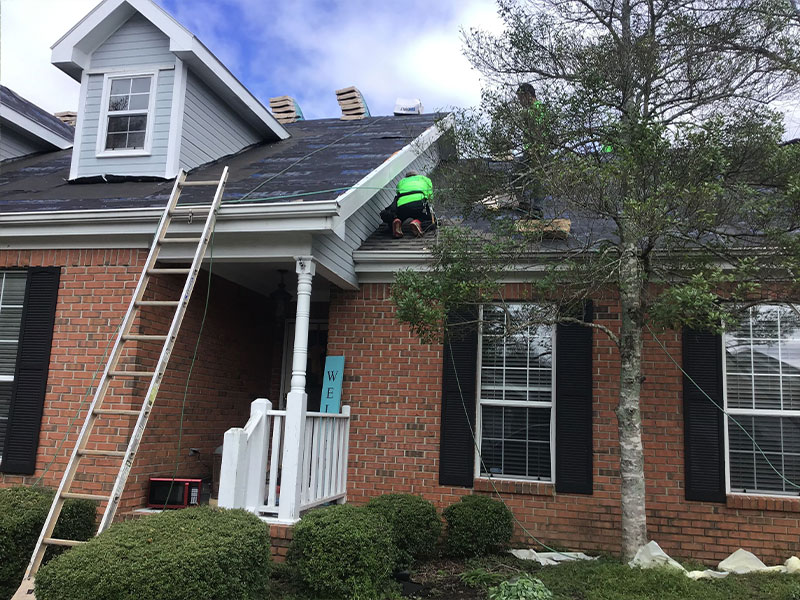
Best Roofers Near Me Hixson Tennessee
Getting the Right Price – Tips on Negotiating with Local Roofers
When it comes to finding the right roofer and getting the right price, it can be a challenging task. However, negotiating with local roofers can help you find the best deal that suits your budget and needs. Here are some tips to help you negotiate like a pro:
- Shop around: The first step to getting the right price is to shop around and compare quotes from different local roofers. This will give you an idea of the average cost and help you identify any outliers.
- Know what you want: Be clear about your roofing needs and requirements before you start negotiating. This will help you articulate your needs better and avoid any confusion during the negotiation process.
- Don’t settle for the first offer: Remember that the first price offered by a roofer is not necessarily the best or final price. Don’t be afraid to negotiate and ask for a better deal that meets your needs and budget.
- Ask for references: Before you agree to any deal, ask the roofer for references from previous clients. This will help you get an idea of the quality of their work and their reliability as a service provider.
- Consider the materials: The quality and type of roofing materials used can have a significant impact on the overall price. Make sure you understand the materials being used and their impact on the cost.
- Be respectful: Remember to be polite and respectful during the negotiation process. This will help you build a good relationship with the roofer and increase your chances of getting a good deal.
By following these tips and being prepared, you can secure a deal that meets your needs and budget.
Questions to Ask Potential Contractors – What to Look Out for Before Making a Decision
When you’re seeking to hire a contractor for a project, it’s critical to ask them the right questions to evaluate their suitability. To make an informed decision, consider the following:
- What is your level of expertise in this field? Experienced contractors will have a better understanding of industry practices, safety measures, and common challenges, and should be able to provide information about previous projects they’ve handled.
- Can you give an accurate estimate of the project’s timeline and budget? A competent contractor should evaluate the project and provide you with a realistic estimate that includes contingencies for unforeseen delays, difficulties, and expenses.
- What insurance coverage do you have? You must verify that your roof contractor has adequate liability insurance to cover any potential damage or injury that may occur during the project.
- What measures do you take to ensure safety on the site? A responsible contractor should take necessary steps to ensure that their work doesn’t pose a threat to your property or the health of people living or working nearby.
- Are there any necessary permits or approvals required for this project? A qualified contractor should know which permits or licenses from local authorities are needed for a specific project and should be able to acquire them on your behalf.
- Can you provide references or reviews from previous clients? A trustworthy contractor would be proud to share positive feedback from happy clients and have a track record of delivering projects on time and within budget.
- What is your preferred method of communication during the project? An effective communication strategy is critical to ensure the project runs smoothly, and the contractor should be willing to keep you updated regularly.
By asking these questions, you’ll be able to evaluate potential contractors and make a well-informed decision that can help you avoid costly mistakes and ensure the success of your project.
Maintaining and Inspecting Your Roof: The Key to Safety and Savings
Respecting your rooftop is more than just a good practice – it’s essential for keeping your home or business safe and avoiding expensive repairs. With proper maintenance and inspection practices, you can ensure your roof stays in great shape and remains visually appealing.
Firstly, regular roof inspections are a must. By identifying and addressing damage or wear and tear early on, you can prevent minor issues from turning into major headaches. Look out for gaps, loose shingles, cracks, and leaks – even seemingly small damage can have disastrous consequences if left untreated.
Secondly, don’t neglect roof cleaning. Regularly removing debris, dirt, and fallen leaves is crucial for preventing clogged gutters. When gutters are clogged, water can build up and seep into your home or business, causing significant damage. Also, be mindful of fallen branches or other physical debris that can potentially harm your roof and lead to leaks.

Best Roofers Near Me Hixson Tennessee
Additionally, proper ventilation is vital to maintain the structural integrity of your roof. Inadequate ventilation can result in temperature fluctuations that cause shingles to warp or crack, which could ultimately necessitate costly repairs or a full replacement.
Lastly, entrust roof maintenance and inspection to professionals. Their expertise allows them to spot any damage or potential issues early on, preventing them from escalating. Moreover, professionals have the necessary tools and equipment to handle repairs, ensuring your roof remains sturdy and secure.
Following proper maintenance and inspection practices is crucial for extending the lifespan of your roof, preserving its visual appeal, and saving you money.
All in all, it is important to remember that the roof of your home is one of the most important components in protecting its contents and structure. It is also a very large investment, so being informed about what options are available, what price you should pay, who you should hire, and how to properly maintain and inspect it is essential. Utilize the tips provided in this blog post to ensure that you make the right decision when it comes to your roofing needs. If you have any additional questions or would like further advice on choosing and working with your roofer, be sure to reach out to our team and we’d be happy to help.
- By: chattroof
- roofers near me Hixson Tennessee, best roofers Hixson Tennessee, best roofers Hixson Tennessee near me, roofers nearby Hixson Tennessee, best roofers Hixson Tennessee in my area, roofers Hixson Tennessee, best roofers in Hixson Tennessee, best roofer near me Hixson Tennessee, best roofers nearby Hixson Tennessee, commercial best roofers near me Hixson Tennessee, best roofers near Hixson Tennessee, professional best roofers near me Hixson Tennessee, best roofers near me Hixson Tennessee, local best roofers near me Hixson Tennessee, roofers near Hixson Tennessee, best roofers Hixson Tennessee nearby
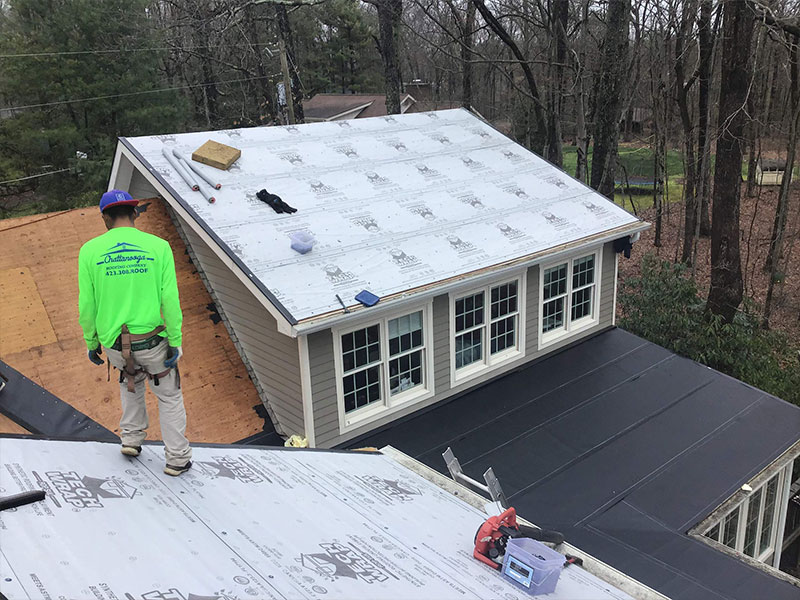
01 Oct. 2023
Best Roofers Near Me Ringgold Georgia
Best Roofers Near Me Ringgold Georgia
Are you planning to re-roof your home and looking for reliable roofers near Ringgold Georgia? You’re not alone – choosing the right contractor can be a difficult process, as it requires finding someone with both the skills and experience to do a quality job. But getting the best roofing services doesn’t have to be stressful! In this blog post, we’ll provide an in-depth look at what factors to consider when selecting local roofers and tips on how to find the right contractors for your project.
Exploring Your Options – Comparing Different Types of Roofers
When considering roofing contractors, it’s important to explore your options and compare different types of roofers. This can help you determine the right professional for your specific roofing needs. To begin, it’s essential to understand the different types of roofers that are available.
First, there are residential roofers who specialize in repairing or replacing roofs on homes. These professionals have experience working with various roofing materials such as asphalt shingles, metal roofing, and tile roofing. They are also knowledgeable about local building codes and regulations, ensuring your roof meets required standards.
Third, industrial roofers specialize in installing and repairing roofs on factories, manufacturing plants, and other industrial structures. They have experience dealing with unique structures, safety regulations, and specialized roofing materials such as metal, asphalt, and rubber.
Finally, there are freelance or independent roofers who work on smaller residential and commercial projects. These professionals have varied experience and can provide customized solutions for your specific roofing needs.
Choosing a Roofing Company: What You Need to Know
If you’re in need of a roofing company, it’s crucial to make an informed decision and do your research. Don’t settle for just any company when it comes to such an important investment. Here are the key factors to consider:
- Experience and Qualifications: Look for a company with a proven track record and a team of licensed professionals. They should also have certifications and accreditations from reputable organizations.
- Reputation: Check online reviews and ask for references. A trustworthy company will have satisfied customers and a solid reputation in the community.
- Warranty and Guarantees: Make sure the company offers a warranty on their workmanship and materials. This ensures any issues will be addressed.
- Materials and Equipment: The quality of materials and equipment used directly affects the lifespan and durability of your roof. Look for a company that uses high-quality materials and modern equipment.
- Communication and Customer Service: Choose a company that communicates well and values your needs. They should be responsive, keep you informed, and provide excellent customer service.
By considering these factors, you can confidently hire a reliable roofing company that delivers high-quality workmanship and exceptional customer service.
Getting the Right Price – Tips on Negotiating with Local Roofers
When it comes to finding the right roofer and getting the right price, it can be a challenging task. However, negotiating with local roofers can help you find the best deal that suits your budget and needs. Here are some tips to help you negotiate like a pro:

Best Roofers Near Me Ringgold Georgia
Shop around: The first step to getting the right price is to shop around and compare quotes from different local roofers. This will give you an idea of the average cost and help you identify any outliers.
- Know what you want: Be clear about your roofing needs and requirements before you start negotiating. This will help you articulate your needs better and avoid any confusion during the negotiation process.
- Don’t settle for the first offer: Remember that the first price offered by a roofer is not necessarily the best or final price. Don’t be afraid to negotiate and ask for a better deal that meets your needs and budget.
- Ask for references: Before you agree to any deal, ask the roofer for references from previous clients. This will help you get an idea of the quality of their work and their reliability as a service provider.
- Consider the materials: The quality and type of roofing materials used can have a significant impact on the overall price. Make sure you understand the materials being used and their impact on the cost.
- Be respectful: Remember to be polite and respectful during the negotiation process. This will help you build a good relationship with the roofer and increase your chances of getting a good deal.
By following these tips and being prepared, you can secure a deal that meets your needs and budget.
Questions to Ask Potential Contractors – What to Look Out for Before Making a Decision
When you’re seeking to hire a contractor for a project, it’s critical to ask them the right questions to evaluate their suitability. To make an informed decision, consider the following:
- What is your level of expertise in this field? Experienced contractors will have a better understanding of industry practices, safety measures, and common challenges, and should be able to provide information about previous projects they’ve handled.
- Can you give an accurate estimate of the project’s timeline and budget? A competent contractor should evaluate the project and provide you with a realistic estimate that includes contingencies for unforeseen delays, difficulties, and expenses.
- What insurance coverage do you have? You must verify that your contractor has adequate liability insurance to cover any potential damage or injury that may occur during the project.
- What measures do you take to ensure safety on the site? A responsible contractor should take necessary steps to ensure that their work doesn’t pose a threat to your property or the health of people living or working nearby.
- Are there any necessary permits or approvals required for this project? A qualified contractor should know which permits or licenses from local authorities are needed for a specific project and should be able to acquire them on your behalf.
- Can you provide references or reviews from previous clients? A trustworthy contractor would be proud to share positive feedback from happy clients and have a track record of delivering projects on time and within budget.
- What is your preferred method of communication during the project? An effective communication strategy is critical to ensure the project runs smoothly, and the contractor should be willing to keep you updated regularly.
By asking these questions, you’ll be able to evaluate potential contractors and make a well-informed decision that can help you avoid costly mistakes and ensure the success of your project.
Maintaining and Inspecting Your Roof: The Key to Safety and Savings
Respecting your rooftop is more than just a good practice – it’s essential for keeping your home or business safe and avoiding expensive repairs. With proper maintenance and inspection practices, you can ensure your roof stays in great shape and remains visually appealing.
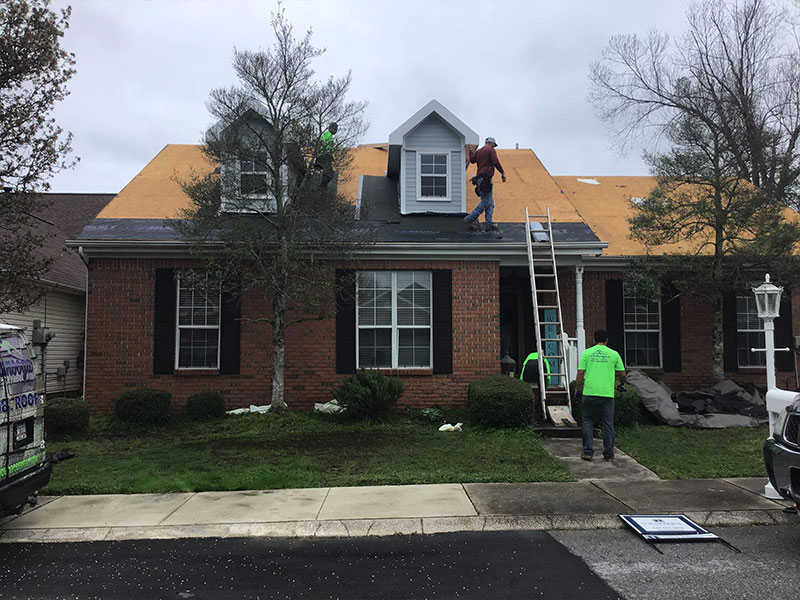
Best Roofers Near Me Ringgold Georgia
Firstly, regular inspections are a must. By identifying and addressing damage or wear and tear early on, you can prevent minor issues from turning into major headaches. Look out for gaps, loose shingles, cracks, and leaks – even seemingly small damage can have disastrous consequences if left untreated.
Secondly, don’t neglect roof cleaning. Regularly removing debris, dirt, and fallen leaves is crucial for preventing clogged gutters. When gutters are clogged, water can build up and seep into your home or business, causing significant damage. Also, be mindful of fallen branches or other physical debris that can potentially harm your roof and lead to leaks.
Additionally, proper ventilation is vital to maintain the structural integrity of your roof. Inadequate ventilation can result in temperature fluctuations that cause shingles to warp or crack, which could ultimately necessitate costly repairs or a full replacement.
Lastly, entrust roof maintenance and inspection to professionals. Their expertise allows them to spot any damage or potential issues early on, preventing them from escalating. Moreover, professionals have the necessary tools and equipment to handle repairs, ensuring your roof remains sturdy and secure.
Following proper maintenance and inspection practices is crucial for extending the lifespan of your roof, preserving its visual appeal, and saving you money.
All in all, it is important to remember that the roof of your home is one of the most important components in protecting its contents and structure. It is also a very large investment, so being informed about what options are available, what price you should pay, who you should hire, and how to properly maintain and inspect it is essential. Utilize the tips provided in this blog post to ensure that you make the right decision when it comes to your roofing needs. If you have any additional questions or would like further advice on choosing and working with your roofer, be sure to reach out to our team and we’d be happy to help.
- By: chattroof
- roofers near me Ringgold Georgia, best roofers Ringgold Georgia, best roofers Ringgold Georgia near me, roofers nearby Ringgold Georgia, best roofers Ringgold Georgia in my area, roofers Ringgold Georgia, best roofers in Ringgold Georgia, best roofer near me Ringgold Georgia, best roofers nearby Ringgold Georgia, commercial best roofers near me Ringgold Georgia, best roofers near Ringgold Georgia, professional best roofers near me Ringgold Georgia, best roofers near me Ringgold Georgia, local best roofers near me Ringgold Georgia, roofers near Ringgold Georgia, best roofers Ringgold Georgia nearby
visit Us: 529 S. Germantown Rd. Chattanooga, TN 37411
email us: ted@chattanoogaroofingco.com
24/7 Emergency call (423) 308-ROOF

